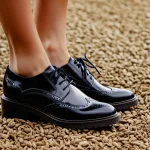Historical barriers and early challenges for women in UK sports
Women’s sports history UK reveals a persistent struggle against gender barriers in sports that limited early athletes’ participation. During the Victorian and Edwardian eras, strict societal norms dictated that physical exertion and competitive activity were unsuitable for women. These cultural attitudes constrained opportunities, framing sports as a male domain and subjecting women to criticism if they defied expectations.
Early women athletes UK often faced limited access to facilities and competitions, with many sporting clubs excluding female members. Nevertheless, pioneering organisations emerged to challenge these restrictions. Groups like the Women’s Amateur Athletic Association, founded in 1922, played pivotal roles in legitimising female athletics through organised events and advocacy.
Additional reading : What are the key factors driving the success of UK sports clubs?
Key figures in this era demonstrated remarkable resilience. Athletes such as Dorothea Lambert Chambers and Charlotte Cooper stood out not only for their achievements but also for breaking social conventions, helping to pave the way for future generations.
In summary, the gender barriers in sports during the early 20th century were deeply rooted in societal opposition and structural inequalities. However, the determination of these early women athletes UK and their supporting organisations laid essential groundwork for the gradual evolution of women’s competitive sports in the UK.
Also read : What Are the Surprising Benefits of Playing Sports in the UK?
Key milestones and turning points in the evolution of women’s sports
Throughout the journey of women’s sports history UK, several pivotal milestones in women’s sports UK mark the progression from restrictive beginnings to wider acceptance. One major turning point was the introduction of sanctioned women’s competitions, which legitimised female participation and challenged entrenched gender barriers in sports. For example, the establishment of official events in the early 20th century expanded opportunities beyond informal or segregated play.
Post-war societal shifts brought new momentum. Changes inspired partly by global movements for gender equality, such as Title IX in the US, influenced attitudes in the UK and encouraged the growth of women’s sports. The 2012 London Olympics represented a landmark moment, showcasing female athletes on a grand stage and dramatically boosting visibility.
Furthermore, the expansion of female-focused sports organisations and governing bodies underscored institutional support for women’s sports. These bodies advocated for fair access, funding, and the professionalisation of women athletes, addressing longstanding inequalities. Together, these major events in women’s sports reflect how determination and evolving social views propelled early women athletes UK toward greater recognition and opportunity.
Historical barriers and early challenges for women in UK sports
Women’s sports history UK is deeply marked by gender barriers in sports rooted in Victorian and Edwardian societal values. These eras enforced strict codes of propriety, viewing physical exertion as unbecoming for women. Consequently, early women athletes UK faced widespread opposition, with many denied access to appropriate facilities or barred from established clubs dominated by male athletes.
This limited access was compounded by cultural beliefs that women’s roles were domestic, preventing widespread acceptance of female sports participation. Despite these challenges, pioneering early women athletes UK such as Charlotte Cooper pushed through these restrictions, proving that women could excel competitively. Organisations like the Women’s Amateur Athletic Association emerged to create structured competitions, directly challenging prevailing gender barriers in sports.
These early groups advocated for formalised female events, improving opportunities through negotiation and visibility. The combination of societal resistance and institutional exclusion shaped the landscape for decades, making the triumphs of early women athletes UK all the more significant. Their resilience accelerated gradual cultural shifts, laying a foundation on which contemporary women’s sports history UK continues to build.
Historical barriers and early challenges for women in UK sports
The women’s sports history UK is marked by persistent gender barriers in sports that severely limited early women athletes UK. Victorian and Edwardian values emphasized strict gender roles, viewing athleticism as unsuitable for women. This cultural mindset led to widespread opposition, restricting female participation in many sports and denying them access to key facilities.
Early women athletes UK not only faced these societal constraints but were also often excluded from clubs dominated by men. Despite such obstacles, pioneering figures like Charlotte Cooper challenged these norms, illustrating that women could compete at high levels. Their determination exposed the unfairness of entrenched gender norms and inspired emerging female athletes.
Additionally, organisations such as the Women’s Amateur Athletic Association played crucial roles in overcoming barriers. They campaigned for formal competitions and wider acceptance, helping to break down some structural inequalities. These groups’ efforts created foundational opportunities for women, paving the way for progressive shifts in attitudes toward female participation in sports.
Overall, the combination of societal opposition and institutional exclusion defined the early experience of women in UK sports, making their achievements especially significant in the women’s sports history UK narrative.
Historical barriers and early challenges for women in UK sports
Victorian and Edwardian values deeply influenced the women’s sports history UK, reinforcing gender barriers in sports that made participation highly restricted. Society viewed physical competition as inappropriate for women, limiting even basic access to facilities and formal competitions. These cultural norms not only discouraged involvement but actively excluded many early women athletes UK from established sporting clubs controlled by men.
The consequences of these norms were twofold. First, women faced institutional obstacles where clubs and organisations rejected their membership, and second, societal opposition branded female participation as improper. This dual challenge shaped the experiences of early women athletes UK, who often had to train in isolation or invent alternative venues.
Despite these hurdles, individual athletes like Charlotte Cooper defied expectations, gaining national and international recognition. Their successes exposed the absurdity of excluding women and inspired formation of groups such as the Women’s Amateur Athletic Association. This organisation proved essential by organising competitive events and advocating for women’s rights in sports, gradually chipping away at entrenched gender barriers in sports.
Thus, the interplay between rigid Victorian ideals and courageous early women athletes UK created a battleground where progress was slow but pivotal for the wider acceptance seen later in the century.
Historical barriers and early challenges for women in UK sports
Victorian and Edwardian values shaped much of the women’s sports history UK, reinforcing severe gender barriers in sports. These periods saw physical activity as inappropriate for women, severely limiting their sports opportunities. The prevailing societal opposition confined many early women athletes UK, often excluding them from established sports clubs and competitive events.
Limited access to facilities was a practical manifestation of these cultural restrictions. Early women athletes UK frequently had to train in isolated or makeshift environments. This exclusion was compounded by the dominant belief that women’s primary role was domestic, discouraging athletic pursuits.
Despite such challenges, key figures played crucial roles in pushing boundaries. Early women athletes UK such as Charlotte Cooper not only excelled in their disciplines but also challenged societal norms. Organisations like the Women’s Amateur Athletic Association emerged, advocating for structured competitions and legitimate recognition, helping to dismantle some gender barriers in sports.
Together, these pioneers and institutions laid essential groundwork. Their efforts highlighted the injustice of exclusion and slowly shifted attitudes, setting the stage for future advances in the acceptance and support of women’s sports in the UK.
Historical barriers and early challenges for women in UK sports
Victorian and Edwardian values fundamentally shaped women’s sports history UK, enforcing strict gender barriers in sports that severely limited female participation. These eras framed physical activity as unsuitable for women, resulting in widespread societal opposition. Early women athletes UK were frequently excluded from sports clubs and competitions dominated by men, restricting access to facilities and formal events.
This exclusion was not only cultural but also institutional. Many sporting bodies denied membership or competitive opportunities to women, reinforcing the notion that sports were a male preserve. Early women athletes UK often had to train in isolation or seek alternative venues, highlighting the depth of these gender barriers in sports.
Despite such obstacles, key figures such as Charlotte Cooper challenged prevailing norms by excelling internationally. Their successes demonstrated women’s capability and helped to question Victorian ideals. Organisations like the Women’s Amateur Athletic Association provided crucial advocacy and organised structured competitions, gradually broadening access for women. Through these efforts, early women athletes UK began to dismantle some of the entrenched gender barriers in sports, setting foundational changes that would enable future generations to advance women’s sports more fully in the UK.






